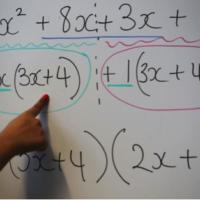China Reforms Vocational Education, Opening Path to HIgher Education
China’s vocational education pathways, long seen as a second-choice path for students, are getting a major overhaul. China’s vocational education students have long had worse employment prospects and lower earnings than their peers who go on to university. China’s revision to its Vocational Education Law, the first update to the law since 1996, aims to change this. The law provides more funding for vocational education programs; lays out new requirements for programs to partner closely with business and industry to provide work-based learning opportunities; and develops new curriculum, textbooks, assessments, and teacher training opportunities. It also allows students to pursue a vocationally-oriented bachelor’s degree, and pursue other higher education pathways following completion. Read more here.

England to Pay Bonuses for STEM Teachers in Disadvantaged Schools

England plans to invest £60 million (US$74 million) to attract and retain top teaching talent in high-need subjects into its most disadvantaged schools. Math, physics, chemistry, and computer science teachers in their first five years of teaching who work in schools that are among the 30 percent most disadvantaged in the country will receive a yearly bonus of £3,000 (U$3,700) for up to three years, for a total of £9,000 (US$11,100) in extra pay. Up to 7,000 teachers across around 2,500 schools in England will benefit from the premium. Teachers will receive scaled bonuses if they work in less disadvantaged schools. The government also aims to provide 500,000 teacher training and development opportunities by 2024, including 2 new specialist national professional qualifications in literacy and early years leadership, as well as a higher starting salaries for teachers to attract and retain the very best talent. These investments come as a survey by the National Education Union found that 44 percent of teachers planned to quit within five years. Education Secretary Nadhim Zahawi said that the extra funding will not only help retain and attract teachers to the most disadvantaged schools, it will also ensure that disadvantaged students receive top-quality STEM education.
New South Wales to Revamp Teacher Leadership Program

New South Wales (NSW) has had teacher leadership roles in place for a decade, with the goal of having over 1000 mentor teachers by 2022. In NSW, and across Australia, teachers can apply to be promoted to “highly accomplished” or “lead” teachers (HALTs). HALTs take on additional responsibilities beyond their regular teaching load, such as mentoring other teachers, and are eligible for a higher salary. The system was modeled after teacher leadership progressions seen in top-performing education systems, including Singapore. However, after ten years, there are currently just 274 HALT teachers in NSW and only 1000 HALT teachers nationwide. Sarah Mitchell, NSW’s Education Minister, wants to raise the number of HALT teachers in NSW to 2,500 by 2025. To achieve this ambitious tenfold increase, Mitchell said the HALT application process will be streamlined, and teachers will be given better guidance on how to show they are a high-quality teacher during the application process. For more, see the Sydney Morning Herald.
Alberta Adds Post-Secondary Seats in High Demand Areas
Advanced Education Minister Demetrios Nicolaides announced that Alberta will invest CAN$70 million (US$55 million) over the next three years to add about 5,000 seats in post-secondary institutions in the Edmonton area. The seats will be in more than 20 programs including business, engineering, nursing, IT, and early learning. Nicolaides said: “It will ensure…that Edmonton has the talent that it needs to continue to thrive.” The funding is part of a CAN$600 million (US$467 million) Alberta at Work Recovery program announced earlier this year. In total, the government has promised to create 10,000 new post-secondary spaces.





